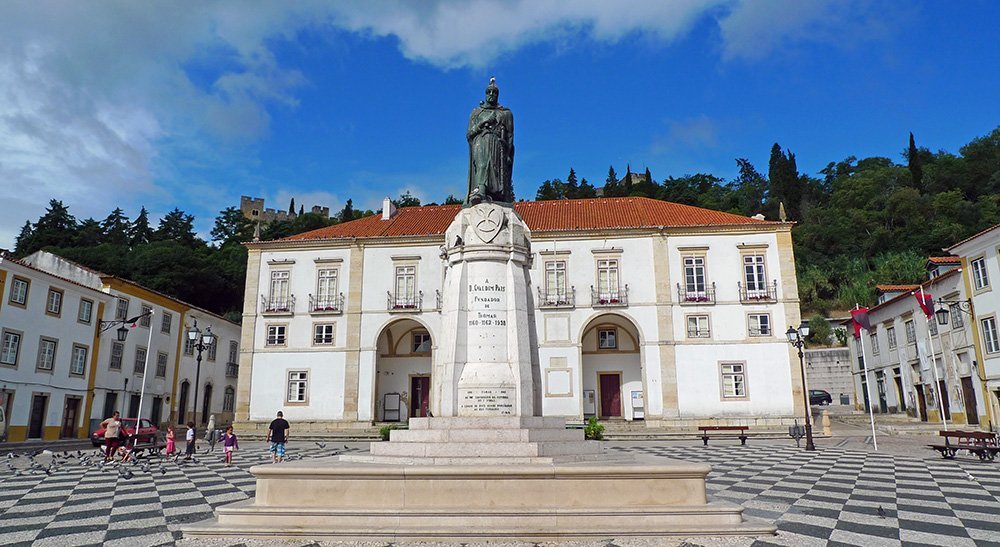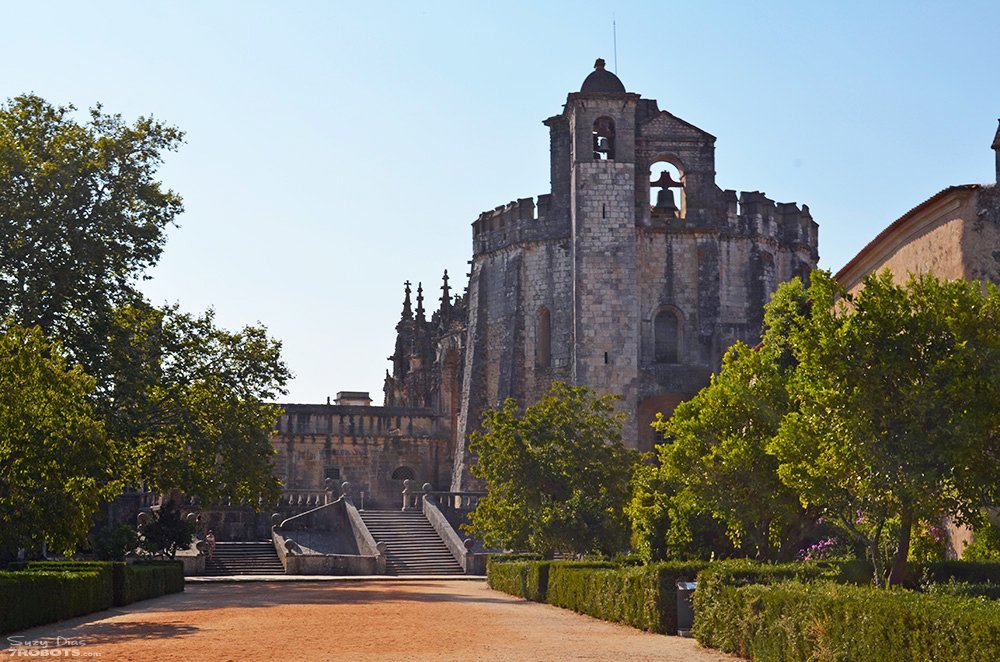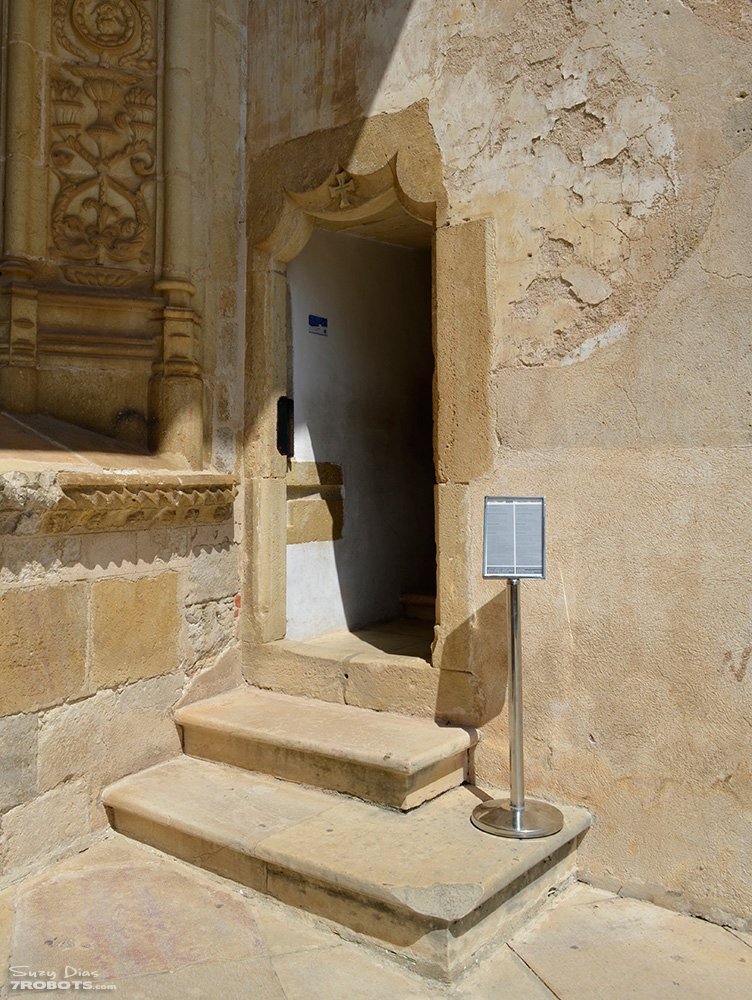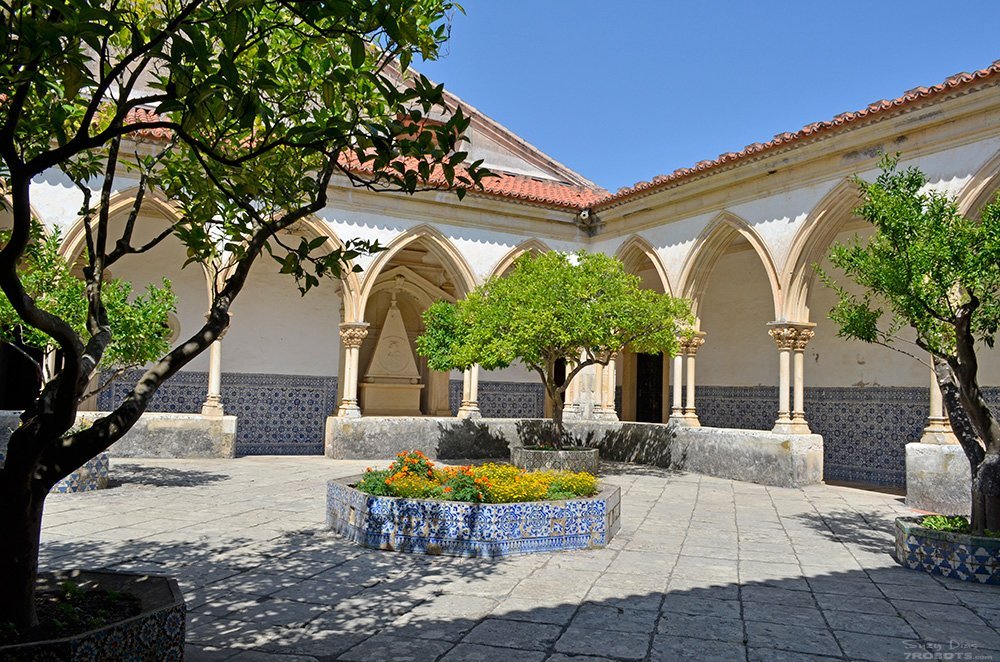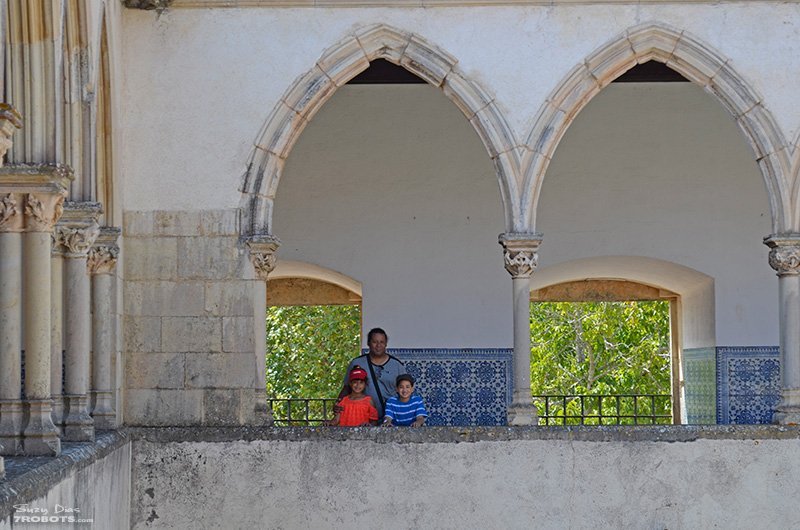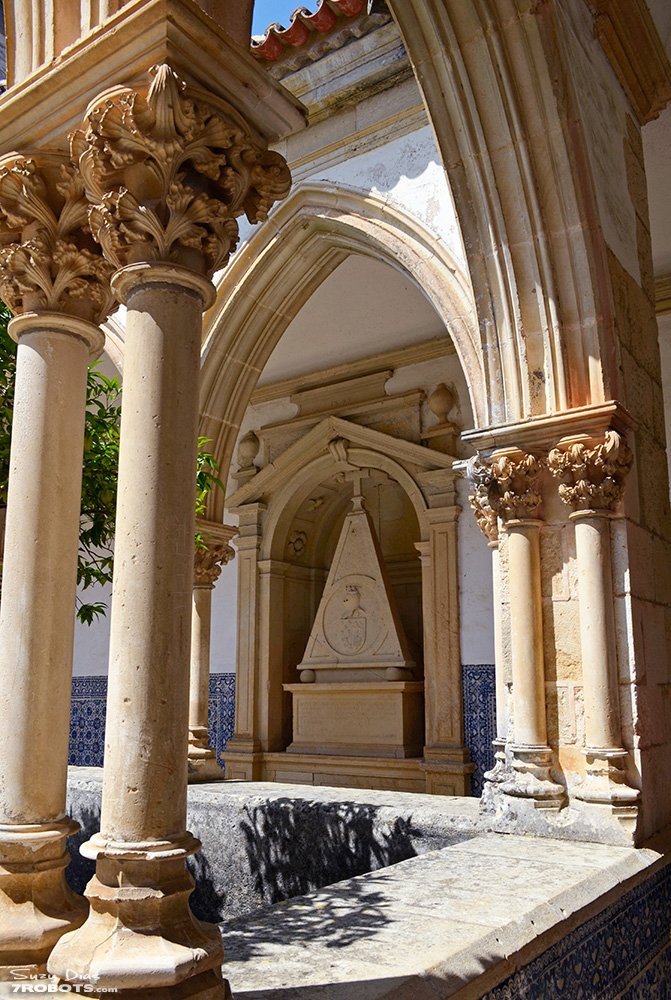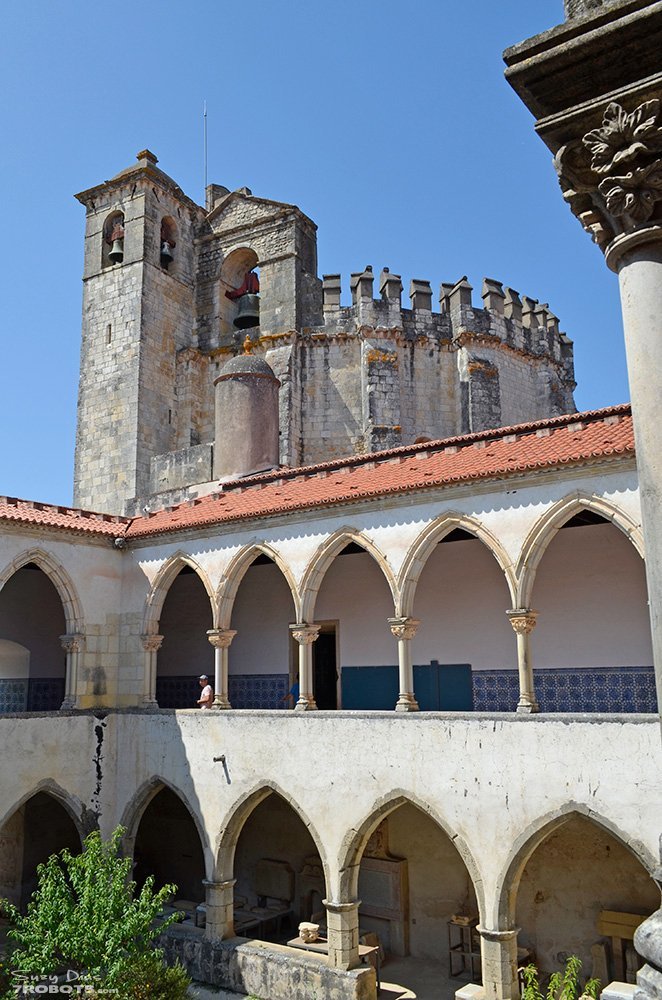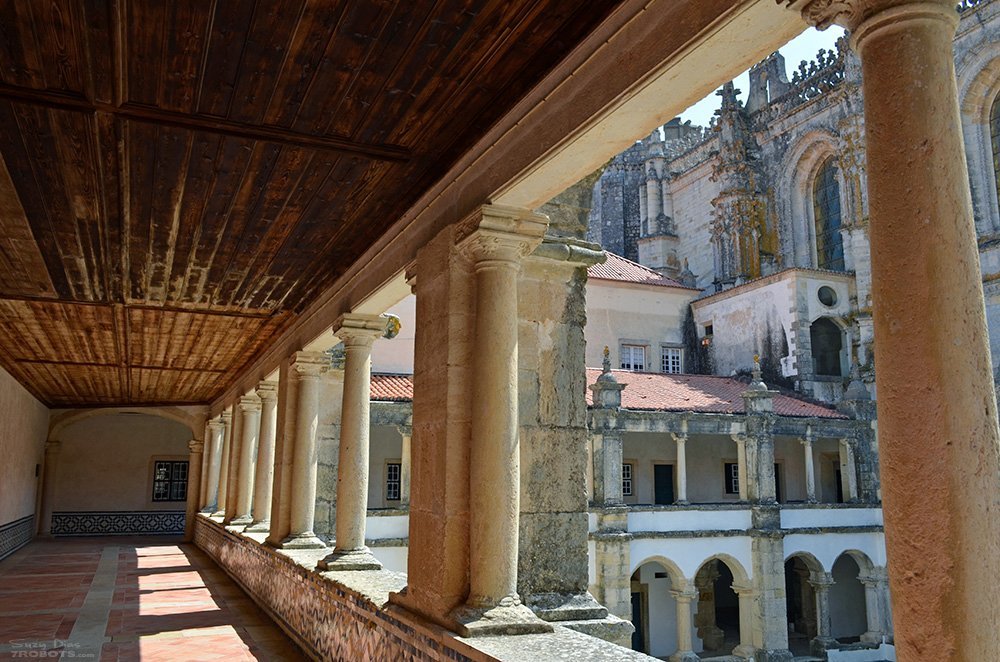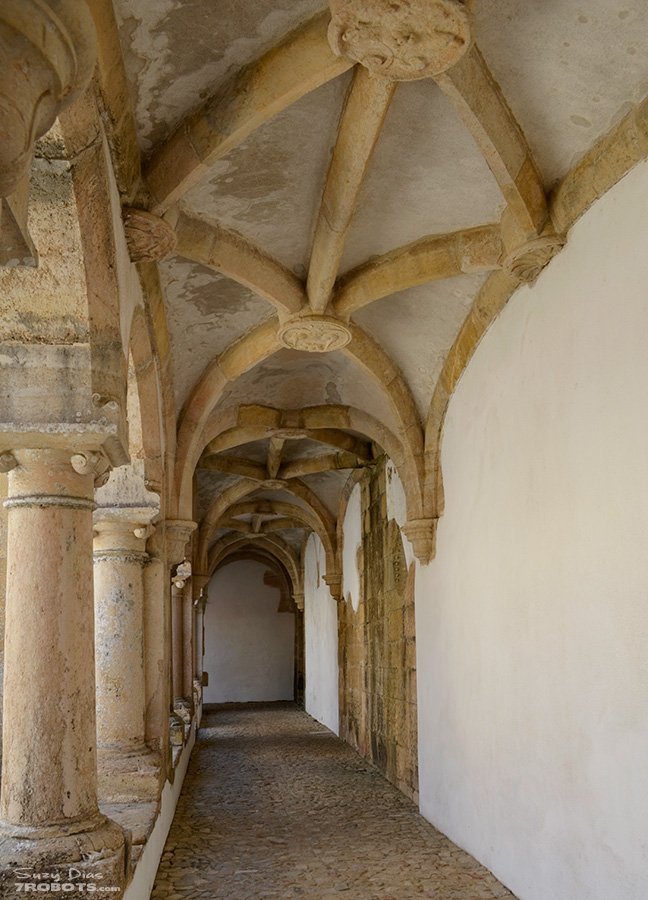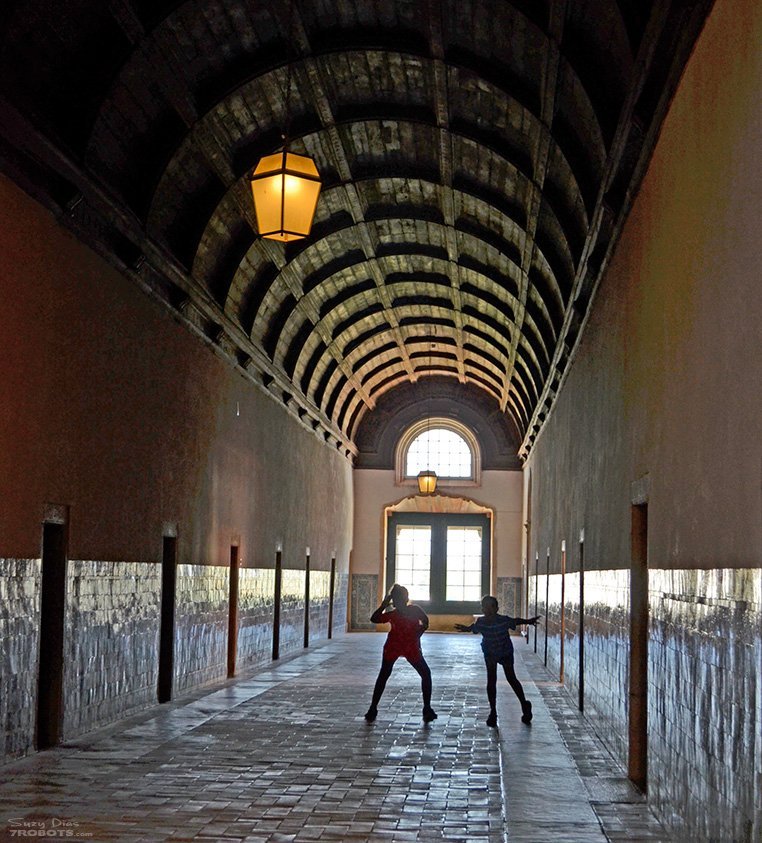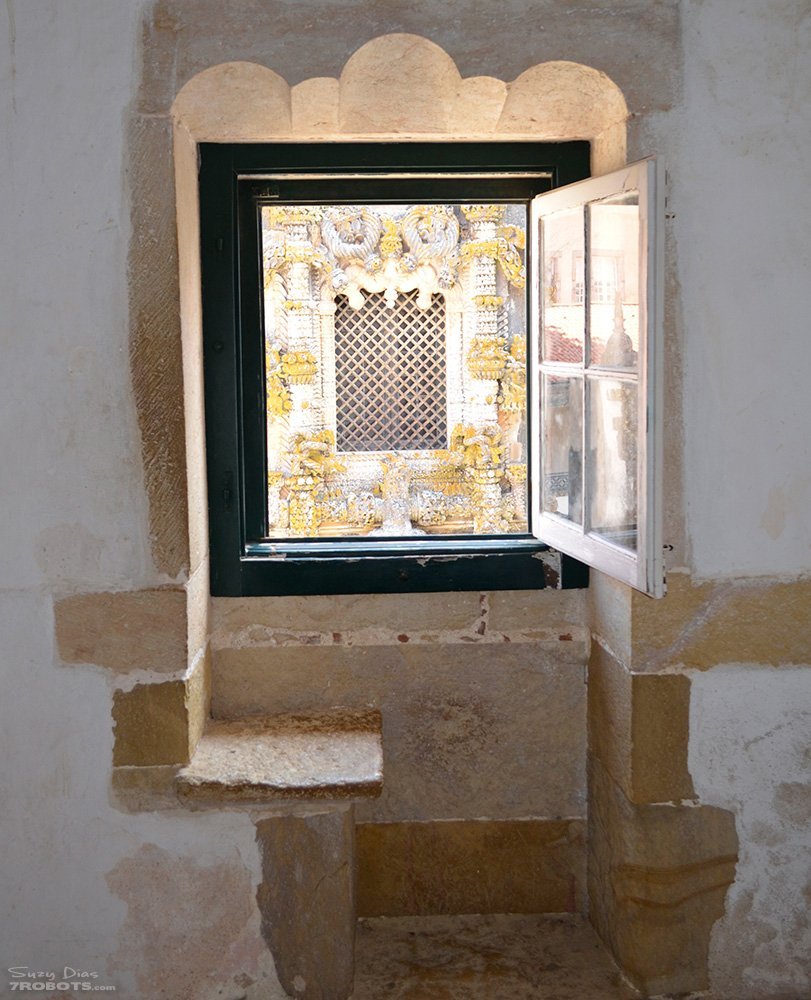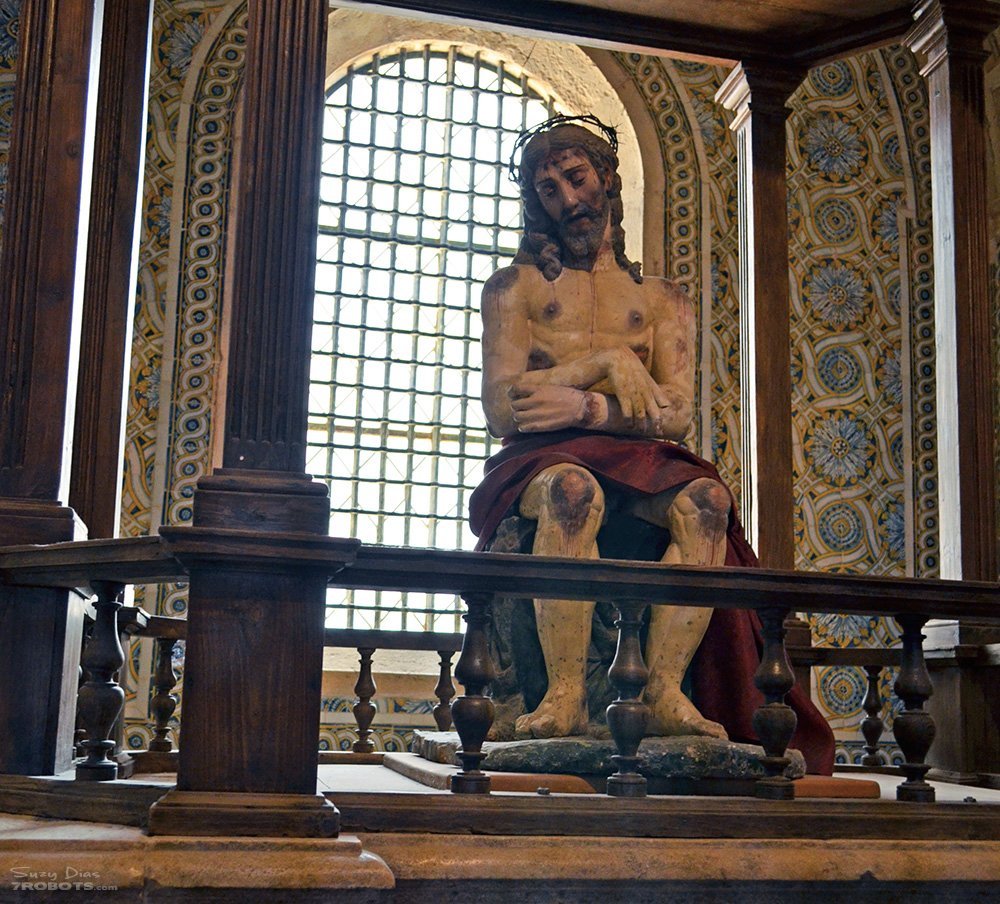Tomar Portugal and It’s Templar Roots
It’s not often to get to say your city was founded by the Knights Templar in 1118, but Tomar is that exception. A beautiful town with a rich and mysterious history makes it one of my favorite places in Portugal.
The Convent of Christ in Tomar is a combination of a castle and a convent. It’s a Unesco World Heritage site and one of the most important medieval sites in Europe. With its fascinating atmosphere and odd architecture, you feel like you’re traveling back in time.
From Unesco: “Originally designed as a monument symbolizing the Reconquest, the Convent of the Knights Templar of Tomar (transferred in 1344 to the Knights of the Order of Christ) came to symbolize just the opposite during the Manueline period – the opening up of Portugal to other civilizations” [click here to read more].
★ For more photos and posts on Portugal, including more about Tomar click here.
Founder of Tomar: Gualdim Pais fourth grand master of the Knights Templar
Dom Gualdim Pais (1118 – 1195) was a Portuguese crusader and the fourth grand master of the Knights Templar. He was in the service of the first King of Portugal, Afonso Henriques. In 1159, after the conquest of the region from the Moors in the Portuguese Reconquista, the land was granted to the Order of the Knights Templar as a fief or fee for services.
Gualdim Pais is the founder of the city of Tomar. In 1160 he began construction of the Convento de Cristo, what would later become the headquarters of the Order or Christ in Portugal.
Templars were re-established in Portugal in 14th century
In 1307, Pope Clement V had many of the members of the Knights Templar in France arrested, tortured into giving false confessions, and burned at the stake. King Philip IV of France disbanded the Order in 1312. In 1314, under the pressure from Pope Clement V, the Templars were banned through Europe.
Much of what you may have read about the Knights Templar is focused on France and perhaps the UK, but the last great chapter in their history was written in Portugal.
In 1319, King Dinis of Portugal persuaded Pope John XXII to allow fugitive Templars to join, with their possessions, the newly created Order of Christ.
Walk through the Convento de Cristo
I’m going to post pictures more or less in the order you’d see things if you were to walk in. I don’t cover the entire complex, but hopefully I can give you an idea of what it’s like to visit this magnificent Manueline style jewel of the Knights Templar.
Convent of Christ Entrance
When you walk though the gates this amazing structure comes into view. A future post will have more photos of the exterior (too many to show here).
Walk up the steps and this magnificent doorway.
But that’s not where you walk in. Follow a narrow corridor to the right and you’ll see this little entrance.
Don’t forget to look up! As soon as you stand at the entrance look up to see this lovely, although weathered and worn, art from the Templars. Your journey through time has now begun.

Tomar Cloister of the Cemetery
Once you buy your tickets, you enter the beautiful Gothic Cloister of the Cemetery which dates to the first half of the 15th century.
Here’s a family shot with Miguel and our kids. It also helps to give you some perspective on how large these archways are.
Cemetery for the Knights Templar and monks
As the name implies, this Gothic cloister was a burial site for the knights and monks of the Order of Christ. The inscription on this tomb reads:
“Built by the Architect Fernão Gonçalves when the Infante D. Henrique (Henry the Navigator) was Governor and Administrator of the Order of Christ (1420-1460), it was remodeled at the beginning of the 17th century. It served as ground for religious processions and burial of the friar knights. The arcosolia (arcosolium) built in this cloister houses the tombs of Diogo da Gama, Baltazar de Faria and Pedro Àlvares Seco de Freitas”.
Washing Cloister (Claustro da Lavagem)
The Washing Cloister or the Claustro da Lavagem is a two-storey gothic cloister built around 1433 under Henry the Navigator (1394–1460). The name is very practical since it’s where the monks would wash their clothes.
Pics as you wander around the arched corridors…
Knights Templar Symbols
This curious Knights Templar symbol of a hand with fingers pointing down seemed like it had a deeper significance. I’m still researching what it means. If you have any info, I’d love to here it (click here or tweet me @7robotsinc). I think it’ll be a very interesting mystery to discover. For more Templar symbols I found in Tomar, click here.
Convent of Christ Refectory Dining Room
The Refectory Dining Room is where the monks Convent of Christ ate their meals.
Convent of Christ Dormitories
“Before leaving, be sure to contrast the luxurious decorations of the church and nave with the spartan dormitories, kitchen, refectory, and other functional areas. Despite the simple conditions, there was the occasional luxury, including an ingenious heating system to make the living quarters tolerable in winter.” [click here to read more]
Time to strike a pose.
This window had an absolutely amazing view of the Window of the Chapter House or the Janela do Capítulo. My next post will provide more photos of this famous window by Diogo de Arruda in 1510-1513. It’s found next to intersecting corridors known as, “The Crossing”.
The Crossing and Crossing Chapel
This is taken directly from the plaque inside:
“The Crossing is the geometric centre of the Convent and where the three corridors that make up the main dormitory meet. The first stage of construction ended in 1533, and is somewhat Spanish Plateresque in style, perhaps due to some of the Biscay sculptors who worked with architect João de Castilho (1470–1552). The top of the lantern tower dates from 1544. Its novelty ornamentation inspired by ancient triumphal motifs.
The Chapel opening onto the crossing shows on the 91 subdivisions of its paneled vaulting, variations on the late medieval theme of the Disorder of the World. On the main altar there is the Ecco Homo, a signed terracotta sculpture by Inácia da Encarnação (1654).”
Ecco Homo by Inácia da Encarnação (1654)
This statue of Jesus Christ, the Ecco Homo, left quite an impression. His eyes are slightly open and seem to follow you around as you move. What I found curious was this seems to depict Jesus alive with his crucifixion injuries. It was quite sad to look upon, though in the photos it seems more like a ‘typical’ suffering statue. In reality it was lifelike and seemed very human.
★ For more photos and posts on Tomar and Portugal, click here.
★ http://www.conventocristo.gov.pt (historical figures involved with the Convent of Christ)


